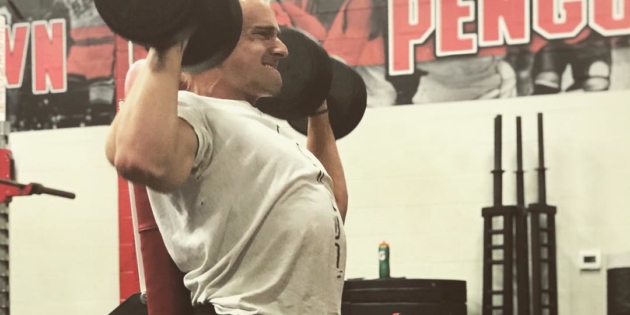- If injuries are caused by accumulated fatigue, when is the point that warm-up/activation/injury reduction drills help (by preparing for activity) or hurt (by adding fatigue)?
- “Good” sprint technique for a team sport athlete (soccer, basketball, etc.) involves low center of mass, short strides, and a forward lean to allow for unpredictable changes of direction. But “good” sprint technique for a track and field sprinter involves high center of mass, longer strides, and an upright posture to allow for the best linear speed. Should team sport athletes sprint like track and field sprinters or could this decrease performance?
- “Weak core” – the pairing of two very vague terms, that together mean absolutely nothing. What metrics determine this?
- “You need to earn the right to rotate” – something that was said at a TPI course I attended. What does this mean? Athletes need to “control” their core – why? Can we objectively say they are more likely for injury without this “control”? Again, what metrics determine an athlete can “control” their core. I’m pretty sure a 6-year old doesn’t need to do Pallof Presses before they can safely swing a baseball bat.
- “Own the movement”. I understand what this means but it just seems stupid. And it seems to only work for low velocity movements.
- If an athlete lands with a knees-in position but has played sport for 20 years with no injuries, why should we now be concerned about their “valgus” knees? Doesn’t the human body adapt? If their ACLs were under more strain from this landing, wouldn’t they adapt and become more resilient over time? What are the potential negatives to changing their technique (if this can even happen)? Overuse in another area of the body not used to this amount of stress?
- Keep the goal the goal. Athletes want to get better at their sport, they don’t want to develop their squat max, RFD, explosive strength, or aerobic power.
- The lateral “push-replace” drill.. I understand what the aim is. But why do it? “Learning to put force into the ground”? Let me play basketball, I’ll put plenty of force into the ground without a coach yelling, “PUSH… PUSH…” If I were an athlete, I don’t think I would be engaged with this exercise.
- If Communication, Decision Making, and Execution of Decisions (Raymond Verheijen) are the components of soccer actions.. could they be used for other team sports (basketball, football, volleyball, etc.).. and if so, how much carryover does CDE have between sports and games? Would developing Communication in volleyball help with the Communication in basketball? (Communication: verbal and non-verbal between teammates)
- What is important to the strength & conditioning world is not important to athletes.
Thoughts



